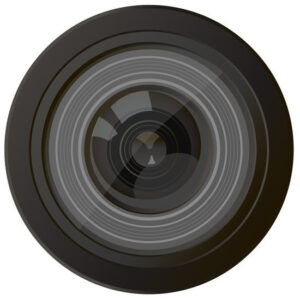By Dr. Ken Broda Bahm:

With Zoom now as common as email, we can find ourselves inhabiting the four corners of a glowing screen more often than we’re inhabiting an actual office or meeting room. Status calls, strategy meetings, witness preparation sessions, and even hearings and parts of trials are taking place via video-conference. While most of us have become savvier in the communication demands and expectations of the medium, one of the trickier considerations is where we look — do we make eye contact with the camera, where we know the other eyes are, or do we look at our screen, where our view of the other faces are?
New research (Fauville et al., 2022) sheds some light on which we should be looking at. We should be looking at the camera lens itself, not at the computer screen. That means looking at the external device perched on top of your monitor, or looking at the spot next to that little green light on your laptop screen. It may be a subtle difference, but in the quick and critical phases of human impression formation, these small distinctions can carry a significant effect. This large scale study found that looking at the camera correlated with greater interpersonal attraction, likability, and social presence. The dilemma is that this isn’t easy. Unlike in-person encounters, conversations via video-conferencing usually lack what is called “mutual gaze synchrony” — in other words, in an on-screen world, when I look you in the eye, it looks like I’m looking somewhere else: “Since in video conferences, the eyes of the participants and the camera are not at the same place, a participant willing to simulate eye contact with an interlocutor will have to stare at the camera,” which means staring away from the face on the screen. In this post, I will share the general findings of the research, while also discussing that practical dilemma.
The Research: Yes, You Should Look at the Camera
The research project was pretty straightforward. Using a robust sample of nearly 4,000 research participants, they varied three factors: gaze direction (at camera, at screen, or off-screen) distance between face and camera (close or far), and camera angle (high, low, or eye-level). Based on model photos in each of the resulting 18 conditions, they asked research participants to see themselves as attending a video conference with this person, and report their social and interpersonal perceptions. While the researchers found some modest effects for the other factors (i.e., a slightly higher camera angle was better in reducing threat perception), the main effect came from gaze direction. “Results showed that looking at the camera increased social presence, likability judgments, and interpersonal attraction compared to looking at the screen or off-screen.”
It is important to note that these results were obtained in the context of a video-conference, and the same principle won’t necessarily apply in a video-recorded deposition. In a Zoom conference, your only audience is behind the camera, so it makes sense to look in that direction. In a video-recorded deposition, however, there is generally the off-camera, but obvious physical presence of a questioner, so it does not make as much sense to just eyeball the camera in that situation. In fact, some recent research in the specific context of a deposition shows that there is no credibility lost when a witness looks directly at the interlocutor rather than looking directly at the camera.
The Challenges: Practical Implications of Improving Your Gaze
When we are video-conferencing, the advice to look at the camera does come with a dilemma, effectively explained by the researchers:
Because the camera is not collocated with the image of another person’s face on the screen, if a participant looks at the screen in order to gaze at their partner, this person may see the participant as averting eye contact. Alternately, if the participant stares directly at the camera, they will lose access to the visual cues and the partner will, in this case, interpret the situation as if the participant was making eye contact. This lack of mutual gaze synchrony has long been considered a barrier to virtual communication.
So what do we do about the fact that looking at the camera means not looking at the faces of the people we are talking to? An answer to that situation is still a bit up in the air, though there are a few ideas out there.
For example, one helpful video, from financial marketing professional Paul Archer, focuses on practicing gazing patterns that naturally include both the camera and the faces you are talking to. In addition, there are also solutions like the “Plexicam,” a see-through device that puts an external camera on or near the specific spot on the screen where you are seeing your audience. Companies like Microsoft and Zoom are also implementing AI tools to correct the gaze direction. Finally, there are fancy ways of using a teleprompter mirror to place the camera in exactly the same place that you need to look to see your target.
Ultimately, the more we get used to the process of meeting on-screen, the more we will want a set up that is both effective and comfortable. For now, however, the “where should I look?” question looks like it is being answered: As much as possible, you should look at the camera.
Other Posts on Communicating by Camera:
- Before Your Next Web-Conference, Fix Your Camera Position
- Don’t Assume the Camera Is Neutral
- Consider That Your Zoom Conferences Might Be Sapping Your Collective Intelligence
Fauville, G., Queiroz, A. C., Luo, M., Hancock, J., & Bailenson, J. N. (2022). Impression Formation From Video Conference Screenshots: The Role of Gaze, Camera Distance, and Angle. Special Collection: Technology in a Time of Social Distancing. Volume 3, Issue 1, Spring 2022. DOI: 10.1037/tmb0000055 URL: https://tmb.apaopen.org/pub/qunlfsu2/release/1